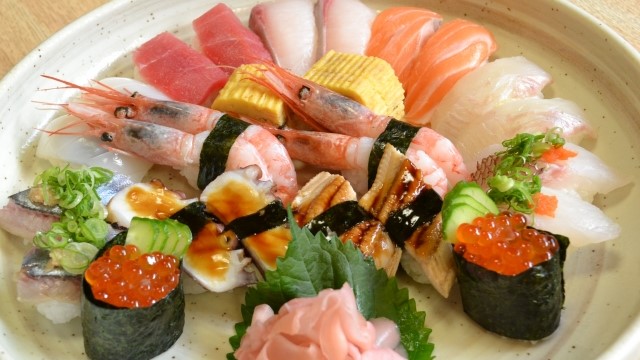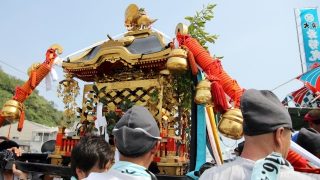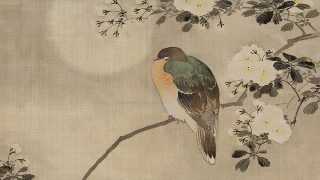About Sushi (寿司)
Sushi is a Japanese dish made with a combination of rice and seafood, and nowadays, there are many Sushi restaurants all over Japan.
Perhaps because Japanese food, Washoku, has recently become a world heritage site, there are many Sushi restaurants overseas, and Japanese Sushi has become very popular among foreigners.
The beginning of Sushi
Sushi is a food that initially originated in the rice-growing regions of Southeast Asia and China. It was a preserved fish dish made by soaking raw fish in vinegar with rice and letting it ferment for months.
It was called “Nare-zushi” in ancient times and remains in many parts of Japan today, including Funazushi around Shiga prefecture.
・Nare-zushi
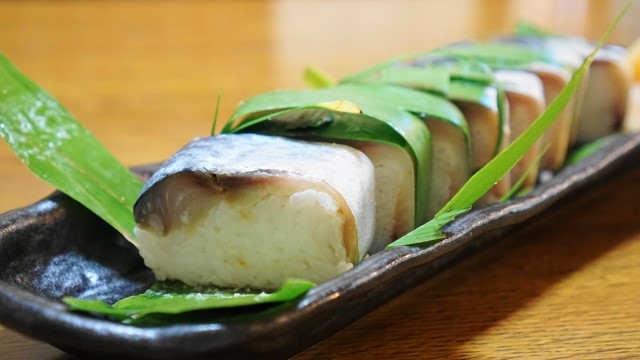
From Nare-zushi, a side dish, and a snack for sake, to “Namanare,” which is also eaten with rice, it developed in the Muromachi period (1336-1573) when vinegar production increased. It became possible to produce a sour taste even if the fermentation time was short.
Later, “Hayazushi” without fermentation appeared, and in the Genroku period (1688-1704), many types of Sushi were born, including Oshi-zushi, Hako-zushi, Bo-zushi, and Maki-zushi were born.
However, the Nigirizushi was completely different from today’s Nigirizushi, and the Sushi was not bite-sized but relatively large, close to an Onigiri (rice ball), making it a commonplace food.
Also, in traditional Edo-style Sushi, no raw fish was used (even if they were used, they used “Zuke,” which was soaked in soy sauce), but instead, it was cooked by boiling or grilling.
It was around the late Meiji and Taisho periods that raw fish was used as it is today, and the size of the Nigiri was reduced to bite-size.
Later, Sushi chefs moved from Edo to other prefectures of Japan, and Edomae sushi spread throughout the country.
The words related to Sushi
Today, Sushi is made at home, but in the past, it was a dish made only by Sushi chefs because of the skills required to grip it. The Sushi chefs are said to have created a unique sushi culture using jargon.
Shari, vinegar-flavored rice
Sushi’s vinegared rice is called “Shari.” It is believed that this is because the appearance of the rice is similar to that of the Buddhist term “Busshari,” which is used to describe the bones of the Buddha. It is a Japanese idea to carry good luck.
Gari, ginger
Gari is ginger pickled in sweet vinegar and served with Sushi. The reason it’s called Gari is the sound it makes when you chew on it. In the old days, people used to eat ginger by making a sound, so they took the sound and called it Gari.
Ginger has a bacteria-killing effect, though it is casually served. It is a food wisdom designed to detoxify the bacteria that tend to occur in raw fish so that even raw fish can be eaten safely.
Ginger also has a perspiration effect, so your body will not get cold even if you eat cold raw fish.
Murasaki, In English, it’s purple color.
Soy sauce, used when eating Sushi, is called “Murasaki,” but there are various theories as to why.
The first is that people in the past used to call the color reddish brown the color purple, so the name “Murasaki” came from the fact that the color of the soy sauce was reddish brown.
Secondly, in the Edo period, when Sushi was generally available to the people, soy sauce was a costly product. Also, at that time, purple was a color with noble meaning. Therefore, it is said that the name “Murasaki” was given to the soy sauce because of its association with color.
In fact, in the Edo period, soy sauce was a valuable flavoring material, costing three times as much as rice and eight times as much as salt. Like purple, which has a noble meaning, it may have been something that the people in general longed for, something they could not quickly get their hands on.
Agari, green tea
In Sushi restaurants, the green tea is called Agari. Initially, the word Agari was a jargon used only by restaurants. Agari was a phrase used by a Sushi chef to tell a staff, “The guests have finished eating, so please serve them a cup of tea.”
The above words are unique words related to Sushi, but you don’t need to be particularly overly careful of them. It’s perfectly fine to use the usual words at a Sushi restaurant. We hope you think of it as trivia about Sushi.
The current Sushi
In recent years, the Sushi boom has spread all over the world, and a variety of sushi materials have been born in various places.
California roll
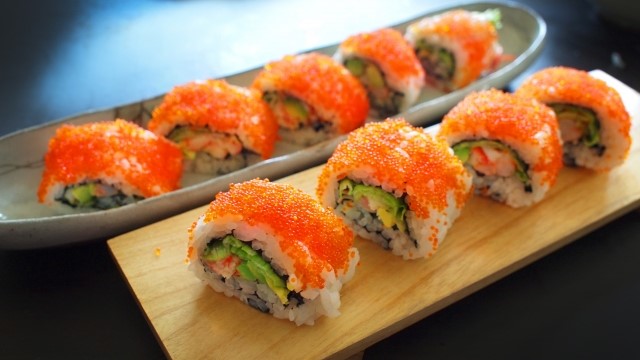
California rolls were developed by Japanese Sushi chefs in the United States and have been eaten worldwide since the 1980s.
Today, Sushi has become popular not only in Europe and the United States but also in Asia, thanks to the need for healthy food and the growing health consciousness of the people.
Please let us know if you have any Sushi of your favorite!


